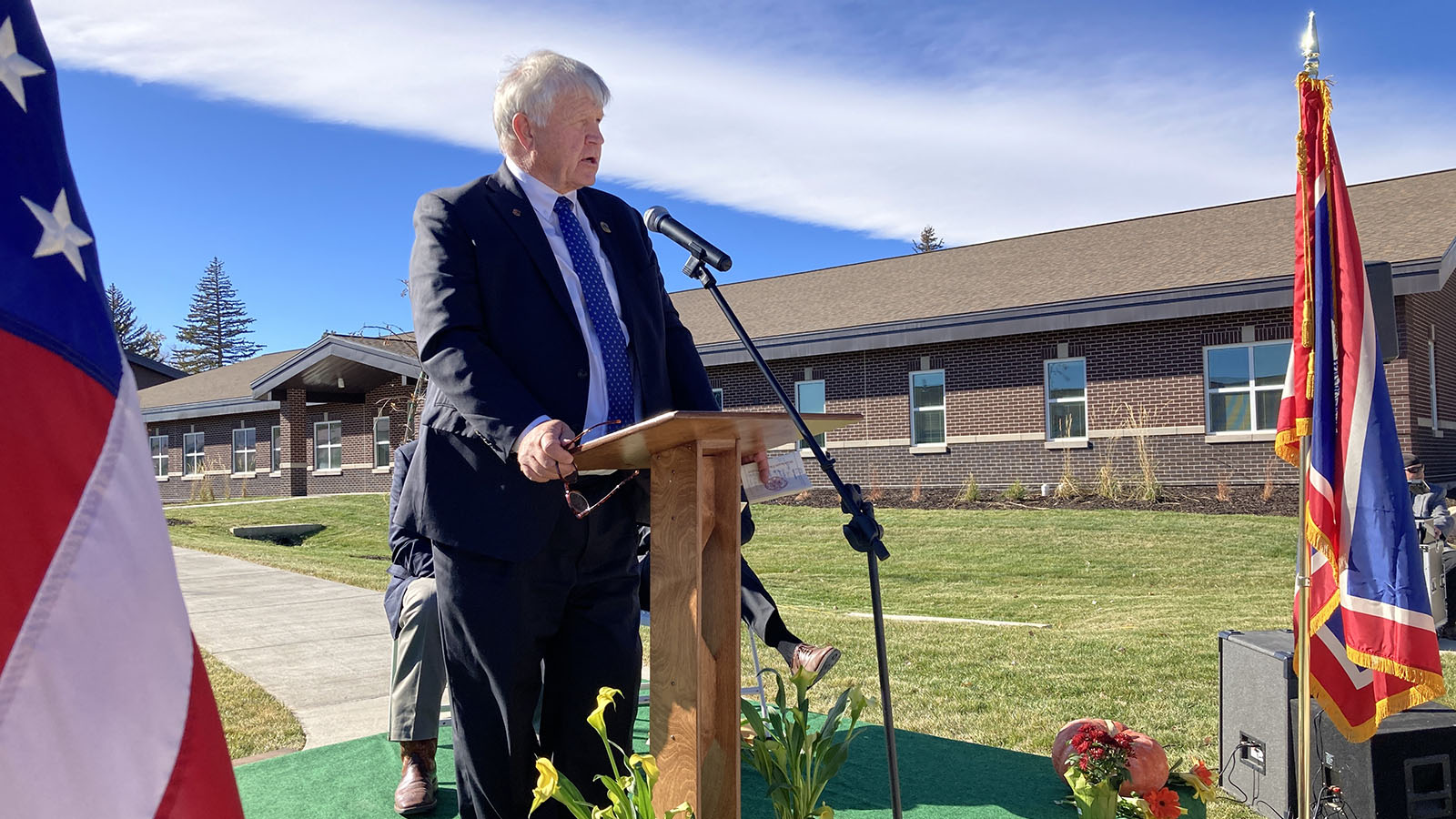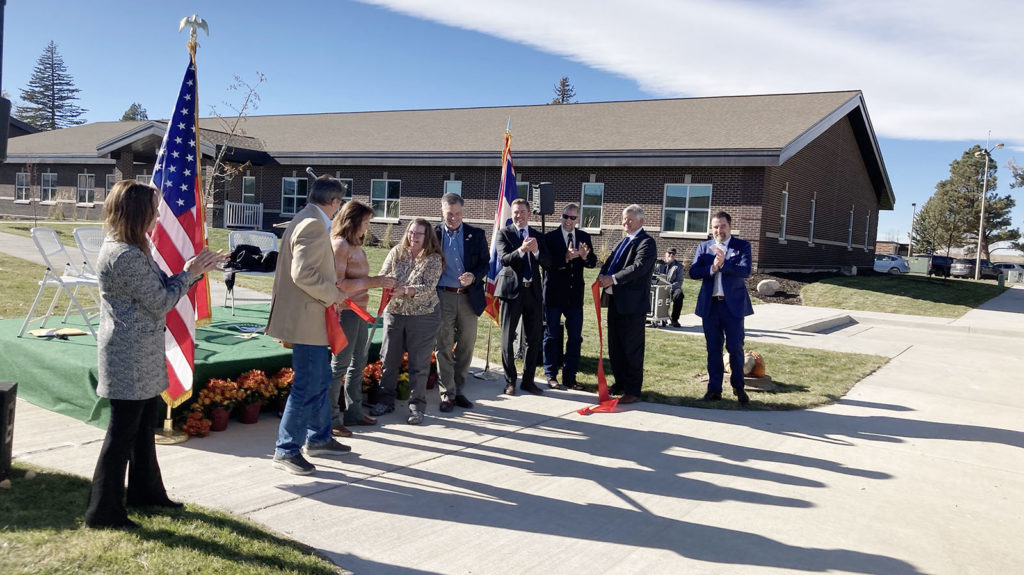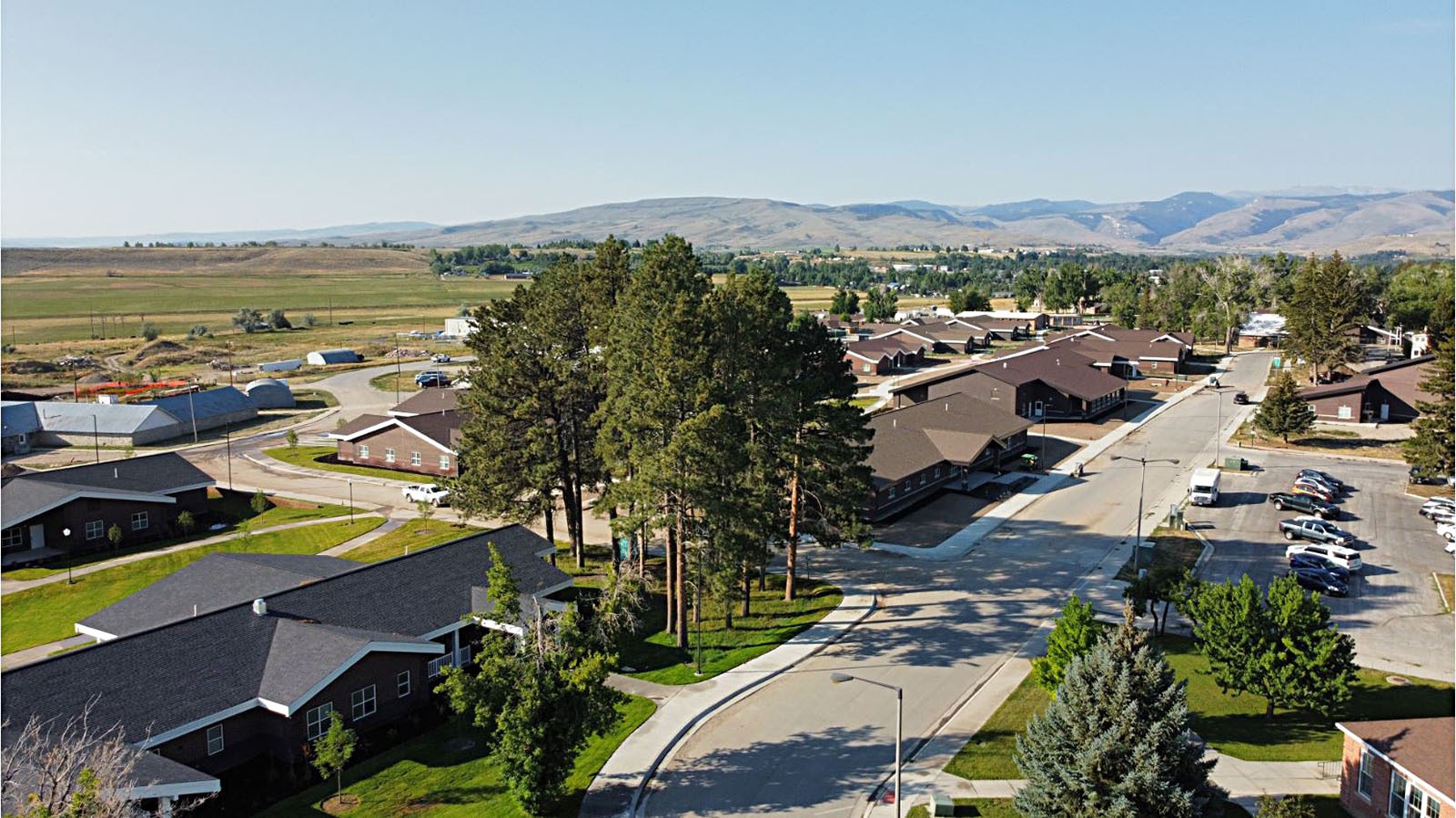Between mint-green brick barriers, the aching souls of the 1930s once languished on cots.
A shell of the 30s-era building still stands on the campus of the Wyoming Life Resource Center in Lander, but it hasn’t been in use for decades. Still, its existence serves as a reminder of how far special-needs health treatment has come in the state.
Intellectually and developmentally disabled people for roughly three decades slept on cots between brick half-walls. Others stayed in rooms too small for jumping jacks. The large, shared bathroom once held toilets in a row, not quite 2 feet apart.
Those days of cramped institutionalization are gone at the facility.


Massive Overhaul
Wyoming Life Resource Center employees, clients and supporters gathered Friday in Lander for a ribbon-cutting ceremony to mark the facility’s massive 2018 remodel, now complete.
Costing about $85 million, the remodel included 10 new cottages with 10 beds each and spacious kitchens, private but accessible bathrooms and office sections for nurses and staff members. There are two new classroom buildings for day programming, and a new skilled nursing facility.
Health care services now are centralized in one medical center where doctors, dentists and pharmacists serve clients a stone’s throw from their cottages.
The cottages themselves face each other across a grassy corridor framing the Wind River mountains.
‘This Is The Safety Net’
Looking at the completed buildings, Rep. Lloyd Larsen, R-Lander, breathed a sigh of relief Friday.
Larsen was appointed to the Joint Legislative and Executive Task Force on Department of Health Facilities in 2014. He co-chaired the committee starting in 2015, and since has spearheaded the effort to fund and complete rebuilding about 70% of the original campus in Lander. He also oversaw new legislation in 2016 redefining the state’s role in the lives of people with intellectual and developmental disabilities.
While the state once saw itself as an institutional custodian, it now sees itself as a segue to help people into community-based care facilities.
“Now as people come here with developmental challenges – they might be acute – but if they can get the services here that allow them to be less acute and can live in the community setting more freely, that’s what we want to achieve,” said Larsen.
If that day never comes for some people, “this is the safety net,” said Larsen. “This is where they can stay.”
Larsen said the state’s goal is to prevent people who can’t receive care in the private sector from “slipping through the cracks” and becoming part of the homeless population.




Emergency Holds, Mental Illness
The original facility was built in 1912 and housed 12 people. It peaked at 700 residents in the 1970s.
The Wyoming Life Resource Center had an official capacity of 141 before its recent remodel but could only feasibly house about 80 people, Larsen said. Now it can house 100, but in a more comfortable, care-cognizant fashion than before.
With the extra 20 beds, many in both the Wyoming executive and legislative branches are hoping the facility can take clients who are at the State Hospital in Evanston, freeing a considerable backlog there. That backlog extends to courts and prosecutors dealing not only with criminal-case defendants pleading not guilty by reason of mental illness, but with temporary emergency holds for people who pose a serious risk to themselves or others.
Staffing
That’s the hope, but realizing it is a question of staffing.
Stefan Johansson, director of Wyoming Department of Health, said staffing health and human services is “immeasurably challenging right now.”
Part of that could be due to a shifting economy and part could be leftover concerns from the COVID-19 pandemic, he said.
“But I’m optimistic,” added Johansson. “We’re making progress, and I think we have support from the executive and legislative branches to look at appropriate compensation, but that’s not the whole picture.”
Johansson hopes the functionality of the new facility would attract health care professionals to the Lander campus.
He noted that there’s give-and-take between the private and public health care sectors. Sometimes the private sector can out-compete the state by offering sign-on bonuses and other spontaneous hiring incentives; sometimes the state can offer higher compensation than private facilities offering jobs.
It’s a delicate balance, said Johansson, because the state depends on the private sector to achieve the official mission of de-institutionalizing people with disabilities.
“We obviously don’t want to put in jeopardy other health care providers that are such a big part of our health care continuum,” he said.


Ribbon-Cutting
Gov. Mark Gordon was one of a few speakers to laud the new buildings at Friday’s ribbon-cutting.
Gordon emphasized that Wyoming has many needs and challenges relating to mental health, including the nation’s highest suicide rate as well as substance abuse issues.
“Health isn’t just about physical health,” he said, adding that he hopes the new facility can encourage individual improvement, because it “feels less like an institution and more like a home.”
He presented a coin representing Wyoming’s code of the West, especially the tenet to “ride for the brand,” to Billy Holmes, project manager for the Wyoming Department of Health.
“You have always ridden for the brand,” said Gordon.
Gordon also thanked the Department of Health and many people who have been involved with the project. He acknowledged Larsen, and Larsen’s committee co-chair and Senate President Sen. Dan Dockstader, R-Afton, as well as Rep. Bob Nicholas, R-Cheyenne, and Sen. Fred Baldwin, R-Kemmerer, who were present.
Larsen during his ribbon-cutting speech thanked Gordon, who was formerly state Treasurer, for understanding the need for the project. He also thanked Sen. Cale Case, R-Lander.
Case, said Larsen, was a longtime proponent of rescuing the campus, even as the chair of a legislative committee in 2012 tried to shut the facility down.
Case conducted research and interviews and fought to keep the facility open.
Larsen also thanked Dockstader, who, said Larsen, paused an appropriations committee meeting about nine years ago to demand that committee members hear an infrastructure report from the Department of Health.
“You never know just what one little act will do,” said Larsen. “Had he not done that – it would have resulted in none of this taking place.”






